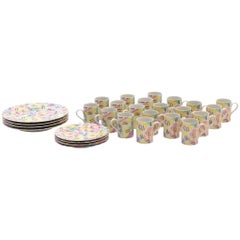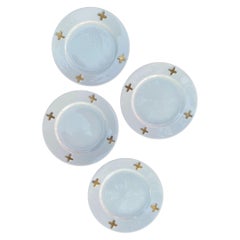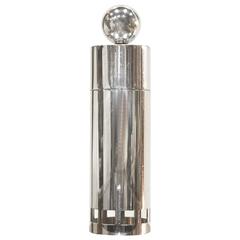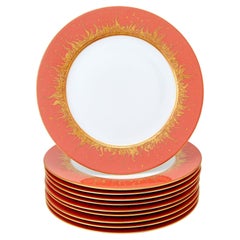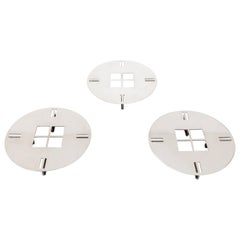Swid Powell Tableware
The New York City–based tableware company Swid Powell produced some of the most distinctive china and silver of the 1980s in collaboration with international architects and designers. It enjoyed renewed attention in 2007, when the Yale University Art Gallery mounted the exhibition “The Architect’s Table: Swid Powell and Postmodern Design,” celebrating the donation to its collection of the company’s papers.
Swid Powell was established in 1982 by Nan Swid and Addie Powell, who met while working at the modernist furniture company Knoll. Their idea was to translate the aesthetics of postmodern design from the skyscraper to the dining table, and they brought into their preliminary discussions nine prominent architects. Among these were Philip Johnson, Stanley Tigerman and Richard Meier, all of whom expressed enthusiasm about making their designs accessible beyond the small group with the funds to commission buildings from them.
The first Swid Powell collection was launched in 1984, accompanied by a bold, graphic print campaign in keeping with the era’s advertising trends. The company’s best-known collaboration was with Robert Venturi’s Philadelphia-based firm, Venturi, Scott Brown and Associates, whose patterns — particularly the floral design Grandmother inspired by a tablecloth Venturi saw at the home of a colleague's grandmother — adorned Swid Powell porcelain as well as furniture and clothing.
The firm also partnered with architect Richard Meier, whose geometric designs were inspired in part by those of Josef Hoffmann and Charles Rennie Mackintosh. Swid Powell also worked with Arata Isosaki, Ettore Sottsass, Zaha Hadid and George Sowden, creating products that incorporated the bright, saturated colors and popular and historical references, like Classical columns, that animated postmodern design in the 1980s. The Chicago Blue china pattern designed for Swid Powell by the firm Gwathmey Siegel references the distinctive patterns of Frank Lloyd Wright’s leaded glass windows. As you will see in the examples below, Swid Powell continued to produce fine, fashionable homewares throughout the decade and beyond.
Late 20th Century European Post-Modern Swid Powell Tableware
Porcelain
1980s American Post-Modern Vintage Swid Powell Tableware
Porcelain
1980s American Modern Vintage Swid Powell Tableware
Ceramic
1980s Italian Post-Modern Vintage Swid Powell Tableware
Silver Plate, Brass
20th Century French Swid Powell Tableware
Porcelain
20th Century French Swid Powell Tableware
Gold
Early 1900s British Antique Swid Powell Tableware
Gold, Enamel
2010s Italian Modern Swid Powell Tableware
Gold
21st Century and Contemporary Italian Renaissance Revival Swid Powell Tableware
Ceramic, Majolica, Faience
Late 20th Century Italian Post-Modern Swid Powell Tableware
Stainless Steel
1930s French Art Deco Vintage Swid Powell Tableware
Silver Plate
Late 20th Century Italian Swid Powell Tableware
Silver Plate
21st Century and Contemporary French Arts and Crafts Swid Powell Tableware
Ceramic
Mid-20th Century English Swid Powell Tableware
Gold
1980s American Modern Vintage Swid Powell Tableware
Crystal, Silver Plate
1960s English Vintage Swid Powell Tableware
Gold
Late 20th Century Japanese Post-Modern Swid Powell Tableware
Stainless Steel
1980s Italian Art Deco Vintage Swid Powell Tableware
Silver Plate
1980s Italian Modern Vintage Swid Powell Tableware
Silver Plate
1980s Italian Art Deco Vintage Swid Powell Tableware
Silver Plate
1980s American Post-Modern Vintage Swid Powell Tableware
Porcelain

